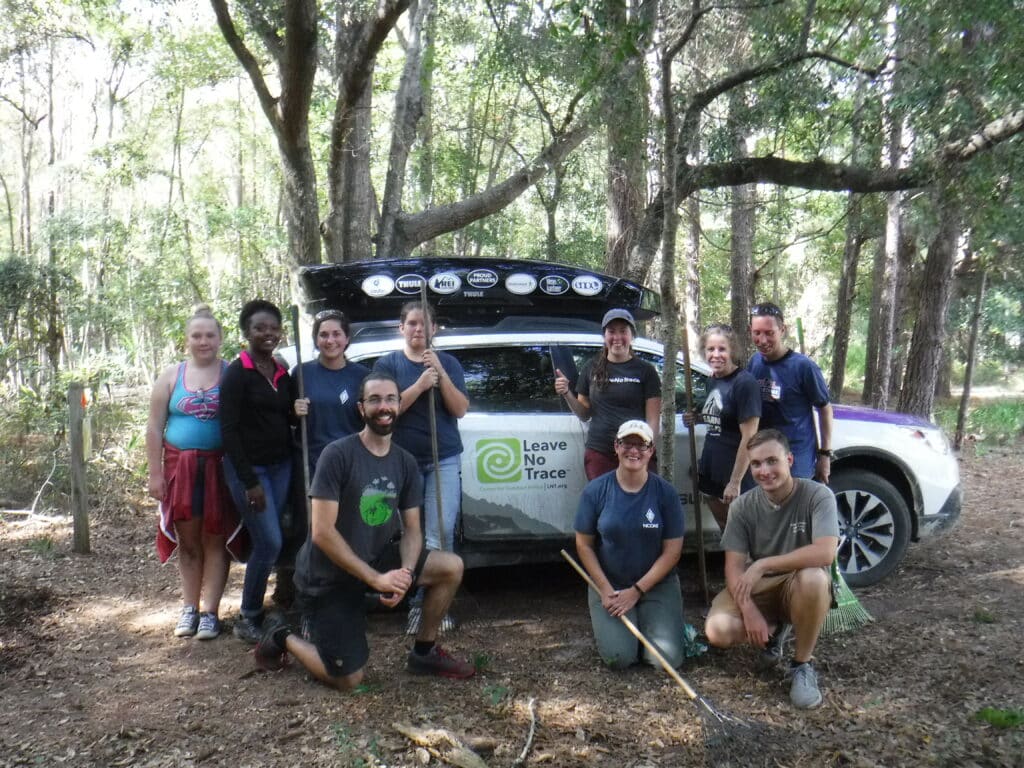Applying the Principles of ‘Leave No Trace’ to Daily Life in an Urban Setting
June 27, 2022
What is Leave No Trace?
The idea behind Leave No Trace is to embrace specific wilderness stewardship values in order to protect our backcountry areas for generations to come. Back in the early 1940s, Robert Baden-Powell, founder of the world Scouting movement, said, “Try and leave the world a little better than you found it.” Over time, this morphed into, “Always leave your campground cleaner than you found it.”
Fifty years later, in the early 1990s, that Leave No Trace concept was immortalized through an educational curriculum developed by the United States Forest Services in partnership with NOLS (the National Outdoor Leadership School). The outcome was an agreed framework for instilling awareness on the part of wilderness travelers to interact with nature in a manner that reduces human impact.

What is The Importance of Leave No Trace?
The idea behind Leave No Trace is to embrace specific wilderness stewardship values in order to protect our backcountry areas for generations to come. Today, that program — run by the Leave No Trace Center for Outdoor Ethics in Boulder, Colorado — impacts more than 15 million people in the United States and dozens of other countries with conservation initiatives, education, training, and research.
Baden-Powell’s simple sentiment more-or-less condenses the seven principles behind today’s Leave No Trace (LNT) program. The well-known LNT’s principles are:
- Plan Ahead and Prepare
- Travel and Camp on Durable Surfaces
- Dispose of Waste Properly
- Leave What You Find
- Minimize Campfire Impacts
- Respect Wildlife
- Be Considerate of Others
You can read more about LNT in the wilderness here. But what about the majority of the time when most of us are not roughing it in the backcountry? Can we incorporate these seven principles into our daily lives? Can we bring such environmental awareness into an urban or front-country setting? We like to think so!
How can you practice the Leave No Trace principles in your everyday life?
Some of us here at NCOAE headquarters in Wilmington, N.C., discussed the possibilities of applying backcountry Leave No Trace principles in everyday living, and here’s what we came up with.
7 Ways to ‘Leave No Trace’ in Everyday Life
1. Plan Ahead and Prepare: Before you head out — whether it’s for a wilderness expedition or an afternoon at a local park or on local trails — thoroughly research the weather; plan meals carefully; check local regulations for closures or burn bands. And choose to bring along re-usable products as much as possible.
2. Travel and Camp on Durable Surfaces: When spending time in the front country or heading out for a leisurely walk in a local park or rec area, stay on existing trails and pathways. This helps avoid damage to the local environment and wildlife. When commuting, consider using public transportation or carpool whenever possible. Or ride your bike on designated paths and roads.
3. Dispose of Waste Properly: Have a system in place for your waste whether it’s at home or on a trip. Recycle appropriate items as much as possible. Swap one-use products with reusable products when you can. And donate clothing, furniture, and other household items instead of throwing them away.
4. Leave What You Find: Sure, it’s tempting to touch or pick up insects, or examine shells, rocks, shellfish and historical structures. But here’s an alternative: Take a photo instead. You don’t disturb the flora and fauna, and you have something to show your family and friends.
5. Minimize Campfire Impacts: Since it’s not likely you’ll be building a lot of campfires in your everyday life at home, become more aware of your energy use. Turn off lights when you leave a room. Open windows instead of hitting the A/C wall unit. Turn off the hose while soaping up your car. And when you do light up your backyard fire pit, be sure to check local fire restrictions, keep fires small, don’t burn trash, and make sure the fire is completely out when done.
6. Respect Wildlife: Raccoons and squirrels are cute. No doubt about that. But don’t approach wild animals, even when they’re in the front country, and never feed them. Also, don’t leave food or belongings where animals could get it, keep trashcan lids on tight at all times, and control your pets. You want to help city critters? Learn about what vegetation they consume and plant those edibles that help them thrive.
7. Be Considerate of Others: Avoid blocking walkways and paths, obey rules and closures, minimize your noise, certainly don’t litter, and pick up the trash you see on the ground. These daily habitat habits don’t require a lot of thought or effort, but they do go a long way toward making our own personal environment a lot more livable.
To discover other stories about Leave No Trace and to further your understanding, check out similar blogs here.
TALK TO US
Have any further questions about our courses, what you’ll learn, or what else to expect? Contact us, we’re here to help!
Leave a comment